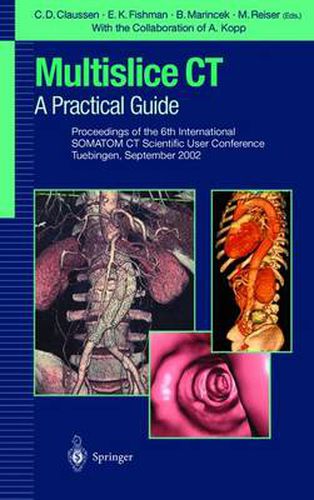Readings Newsletter
Become a Readings Member to make your shopping experience even easier.
Sign in or sign up for free!
You’re not far away from qualifying for FREE standard shipping within Australia
You’ve qualified for FREE standard shipping within Australia
The cart is loading…






This title is printed to order. This book may have been self-published. If so, we cannot guarantee the quality of the content. In the main most books will have gone through the editing process however some may not. We therefore suggest that you be aware of this before ordering this book. If in doubt check either the author or publisher’s details as we are unable to accept any returns unless they are faulty. Please contact us if you have any questions.
Until recently, CT scanner performance was limited by a series of compromises. With single-detector scanners, one cannot select thin collimation and still maintain the required extent of volumetric coverage. Slow scans cause motion artifacts that impair image quality. The introduction of multidetector CT technology, however, has revolutionized the field. Currently multidetector, multislice CT scanners acquire up to four channels of data from interweaving spirals. The minimum gantry rotation period is as low as half of a second. This increased scan speed allows for thinner collimation and thus higher longitudinal or z-axis resolution in comparison with single-detector CT. The improved image quality with multidetector technology leads to new applications of CT, particularly in cardiac, vascular, and abdominal imaging. On-going clinical studies are evaluating the suitability of this new imaging tool for non-invasive screening and diagnosis of coronary artery disease. A particular advantage to the increased scan speed in vascular imaging is the ability to cut intra venous contrast dosage and still maintain peak enhancement CT throughout the entire acquisition. Thin-section, multiphasic acquisition during optimal arterial-phase and venous-phase enhan cement significantly improves the accuracy for small lesion and vessel detection, and enhances overall classification of abdominal neoplasms. On the other hand, the increasingly large volume data sets force to new ways of looking at, presenting, storing, and trans ferring images. Networking and two- and three dimensional data processing are the key words.
$9.00 standard shipping within Australia
FREE standard shipping within Australia for orders over $100.00
Express & International shipping calculated at checkout
This title is printed to order. This book may have been self-published. If so, we cannot guarantee the quality of the content. In the main most books will have gone through the editing process however some may not. We therefore suggest that you be aware of this before ordering this book. If in doubt check either the author or publisher’s details as we are unable to accept any returns unless they are faulty. Please contact us if you have any questions.
Until recently, CT scanner performance was limited by a series of compromises. With single-detector scanners, one cannot select thin collimation and still maintain the required extent of volumetric coverage. Slow scans cause motion artifacts that impair image quality. The introduction of multidetector CT technology, however, has revolutionized the field. Currently multidetector, multislice CT scanners acquire up to four channels of data from interweaving spirals. The minimum gantry rotation period is as low as half of a second. This increased scan speed allows for thinner collimation and thus higher longitudinal or z-axis resolution in comparison with single-detector CT. The improved image quality with multidetector technology leads to new applications of CT, particularly in cardiac, vascular, and abdominal imaging. On-going clinical studies are evaluating the suitability of this new imaging tool for non-invasive screening and diagnosis of coronary artery disease. A particular advantage to the increased scan speed in vascular imaging is the ability to cut intra venous contrast dosage and still maintain peak enhancement CT throughout the entire acquisition. Thin-section, multiphasic acquisition during optimal arterial-phase and venous-phase enhan cement significantly improves the accuracy for small lesion and vessel detection, and enhances overall classification of abdominal neoplasms. On the other hand, the increasingly large volume data sets force to new ways of looking at, presenting, storing, and trans ferring images. Networking and two- and three dimensional data processing are the key words.